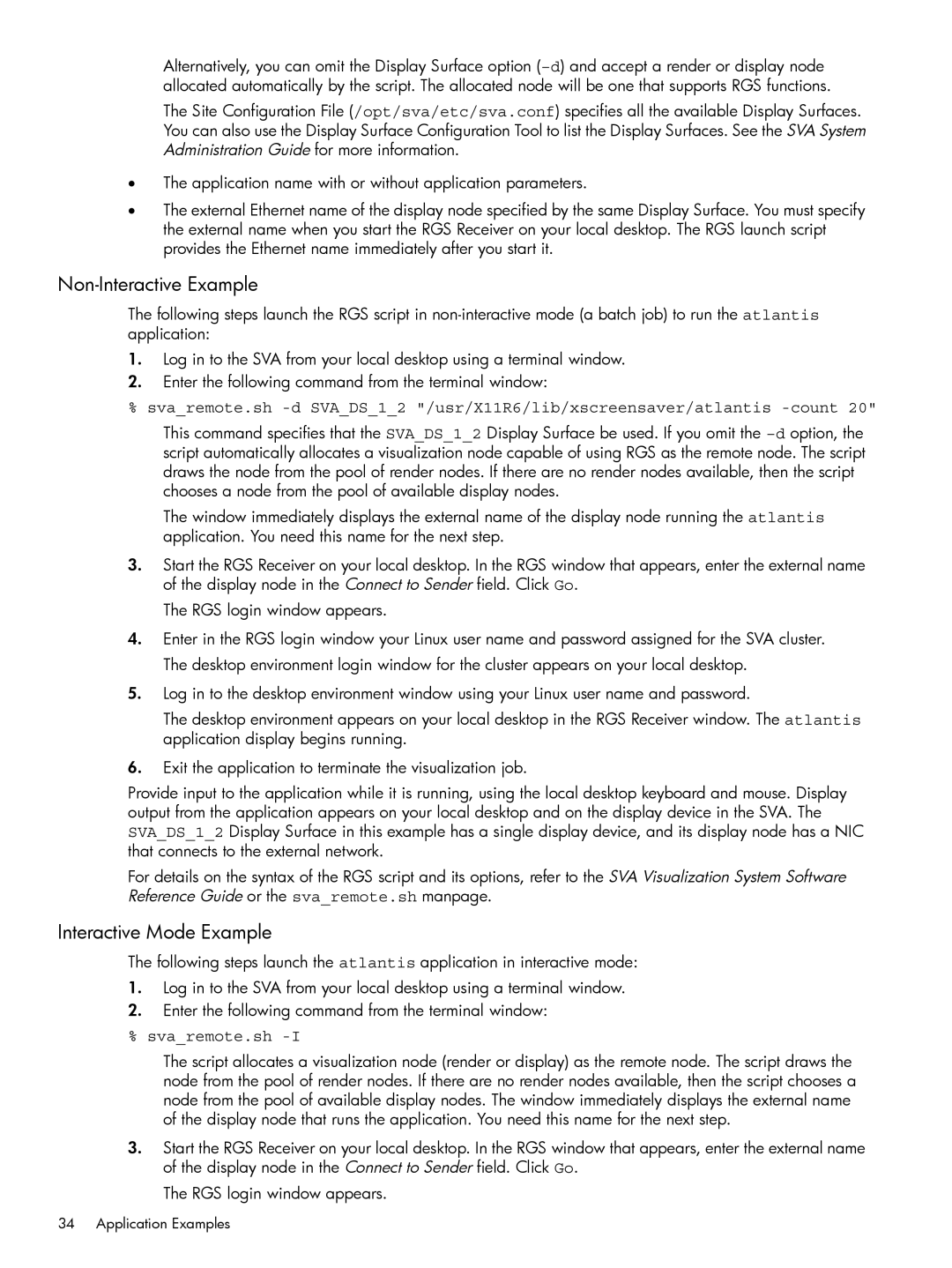Alternatively, you can omit the Display Surface option
The Site Configuration File (/opt/sva/etc/sva.conf) specifies all the available Display Surfaces. You can also use the Display Surface Configuration Tool to list the Display Surfaces. See the SVA System Administration Guide for more information.
•The application name with or without application parameters.
•The external Ethernet name of the display node specified by the same Display Surface. You must specify the external name when you start the RGS Receiver on your local desktop. The RGS launch script provides the Ethernet name immediately after you start it.
Non-Interactive Example
The following steps launch the RGS script in
1.Log in to the SVA from your local desktop using a terminal window.
2.Enter the following command from the terminal window:
% sva_remote.sh
This command specifies that the SVA_DS_1_2 Display Surface be used. If you omit the
The window immediately displays the external name of the display node running the atlantis application. You need this name for the next step.
3.Start the RGS Receiver on your local desktop. In the RGS window that appears, enter the external name of the display node in the Connect to Sender field. Click Go.
The RGS login window appears.
4.Enter in the RGS login window your Linux user name and password assigned for the SVA cluster. The desktop environment login window for the cluster appears on your local desktop.
5.Log in to the desktop environment window using your Linux user name and password.
The desktop environment appears on your local desktop in the RGS Receiver window. The atlantis application display begins running.
6.Exit the application to terminate the visualization job.
Provide input to the application while it is running, using the local desktop keyboard and mouse. Display output from the application appears on your local desktop and on the display device in the SVA. The SVA_DS_1_2 Display Surface in this example has a single display device, and its display node has a NIC that connects to the external network.
For details on the syntax of the RGS script and its options, refer to the SVA Visualization System Software Reference Guide or the sva_remote.sh manpage.
Interactive Mode Example
The following steps launch the atlantis application in interactive mode:
1.Log in to the SVA from your local desktop using a terminal window.
2.Enter the following command from the terminal window:
% sva_remote.sh -I
The script allocates a visualization node (render or display) as the remote node. The script draws the node from the pool of render nodes. If there are no render nodes available, then the script chooses a node from the pool of available display nodes. The window immediately displays the external name of the display node that runs the application. You need this name for the next step.
3.Start the RGS Receiver on your local desktop. In the RGS window that appears, enter the external name of the display node in the Connect to Sender field. Click Go.
The RGS login window appears.
34 Application Examples
